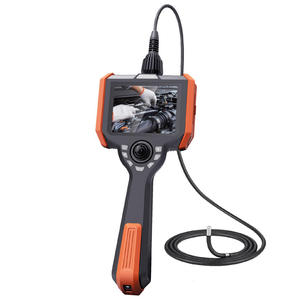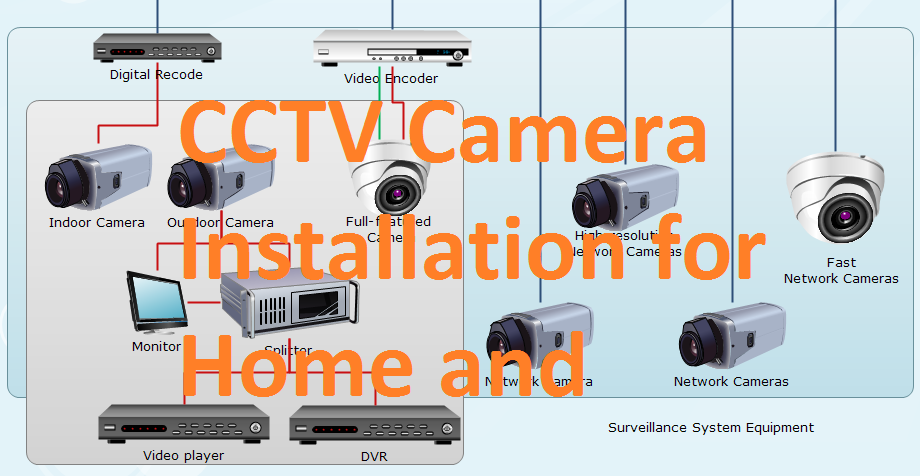The Need of a Fence Detection System in Protecting Your Establishment
The Need of a Fence Detection System in Protecting Your Establishment
Blog Article
How CCTV Cameras With Fiber Optic Outcome Boost Long-Distance Tracking
CCTV cameras geared up with fiber optic result represent a significant advancement in long-distance security modern technology, using unrivaled advantages over standard systems. By leveraging the properties of light transmission through optical fiber, these cameras make certain high-def video high quality continues to be undamaged across extensive ranges while properly mitigating electromagnetic interference. This development not only enhances picture clearness however likewise simplifies setup processes and resource appropriation. As we discover the effects of this innovation, one must consider just how these advancements are reshaping the landscape of safety and security and surveillance systems in numerous applications.

Comprehending Fiber Optic Modern Technology
Fiber optic modern technology is increasingly used in long-distance tracking applications because of its exceptional capability for information transmission. This technology employs thin strands of glass or plastic fibers to transmit information as light signals, dramatically reducing the depletion frequently related to standard copper cable televisions. The integral residential properties of fiber optics allow for the transmission of large quantities of data over significant distances without loss of top quality, making it a perfect selection for applications requiring reliable communication.
The concept of complete internal representation helps with the efficient transmission of light within the fiber, making sure high transmission capacity and speed. Unlike electrical signals in steel wires, fiber optics are unsusceptible to electro-magnetic interference, improving the integrity of information transmission. This particular is particularly beneficial in settings with high degrees of electrical noise, such as industrial settings or urban locations.
In addition, fiber optic cables are lighter and much more adaptable than their copper counterparts, which simplifies setup and reduces structural lots. With their resilience and resistance to environmental variables, optical fiber are appropriate for outside applications, therefore extending the reach of checking systems. Consequently, fiber optic innovation is ending up being a keystone in contemporary monitoring solutions, properly attending to the obstacles of long-distance surveillance.
Benefits of Fiber Optic CCTV
Making use of fiber optic innovation in CCTV systems offers countless benefits that boost security abilities. Among the key benefits is the capacity to transfer high-def video clip over lengthy distances without substantial signal degradation. Unlike traditional copper cable televisions, fiber optics can maintain video quality over extensive runs, making them excellent for big residential properties or remote tracking areas.
Furthermore, fiber optic cable televisions are less prone to electromagnetic disturbance, which can distort signals in traditional systems. This makes sure clearer pictures and undisturbed service, crucial for safety surveillance. Furthermore, fiber optics are inherently much more safe and secure, as obstructing signals needs specialized equipment, hence offering an additional layer of security versus unauthorized accessibility.
The light-weight and small nature of fiber optic cables additionally streamlines installment, enabling simpler directing through limited rooms and decreasing overall labor costs. Their resilience makes them immune to ecological factors such as wetness and temperature level variations, prolonging the life expectancy of the i was reading this security system.
Lastly, fiber optic systems can click here for info support a greater number of electronic cameras on a single network, optimizing sources and offering scalability for future expansion. These benefits make fiber optic CCTV systems a premium selection for modern-day monitoring demands.
Comparison With Typical Systems
When comparing CCTV systems, typical setups often fall short in several essential locations, especially in terms of range and signal stability. Conventional coaxial cable television systems commonly face considerable signal deterioration over long distances, limiting effective monitoring ranges to approximately 300 feet (cctv fibre optic cable). Yet threshold, photo quality decreases, leading to potential blind places and reduced surveillance efficiency
In comparison, fiber optic systems keep signal integrity over much better distances, frequently surpassing a number of miles without loss of high quality. This is largely as a result of their capacity to send data as light signals, which are much less susceptible to electro-magnetic disturbance than electric signals made use of in traditional systems.
In addition, standard systems require a lot more substantial upkeep and troubleshooting due to their vulnerability to ecological variables such as dampness and electro-magnetic sound. Fiber optic systems, alternatively, offer enhanced sturdiness and reduced maintenance costs, as they are much less vulnerable to damages.
Applications in Long-Distance Surveillance
The benefits of modern-day CCTV systems in preserving signal honesty over cross countries open a broad variety of applications for long-distance monitoring. One significant application is in city security, where communities deploy fiber optic CCTV systems to monitor public spaces, boosting safety and security and deterring criminal activity. These systems give continual, high-quality video clip feeds site link that are critical for reliable police and emergency situation response.
One more essential application is in industrial setups, where remote monitoring of producing procedures and unsafe areas is crucial. Fiber optic CCTV can stand up to rough settings and send data over cross countries without loss of high quality, permitting real-time oversight and decreasing risks to employees.
Furthermore, vital infrastructure such as airports, railways, and pipes gain from long-distance CCTV monitoring. Safety teams can look after big areas from centralized control areas, making certain quick response to any kind of incidents.
In addition, in agricultural settings, farmers utilize long-distance CCTV to keep track of crops and animals, aiding to enhance productivity and protection. In general, the flexibility and reliability of fiber optic CCTV systems make them essential across numerous industries, allowing thorough security options tailored to certain demands.
Future Fads in Surveillance Innovation
Just how will improvements in modern technology improve the landscape of security? The future of monitoring modern technology is poised for substantial makeover, driven by advancements such as synthetic intelligence (AI), machine understanding, and side computing. These modern technologies make it possible for real-time information evaluation, enabling fast identification of possible dangers and improved situational recognition.
AI-powered analytics will certainly improve the accuracy of facial acknowledgment systems, lowering false positives and allowing a lot more reliable tracking of individuals. Furthermore, the assimilation of Web of Things (IoT) tools will promote a seamless network of interconnected monitoring systems, boosting tracking abilities across large areas.
One more fad is the change towards cloud-based storage space solutions, which supply scalable data monitoring and ease of access. This will allow organizations to save substantial amounts of video data without the constraints of physical storage space, while ensuring that information is easily retrievable.

Conclusion
In verdict, CCTV cams geared up with fiber optic result stand for a substantial innovation in long-distance monitoring capabilities. As surveillance technology continues to develop, the fostering of fiber optic services will likely play an essential role in improving protection across varied applications.
Report this page